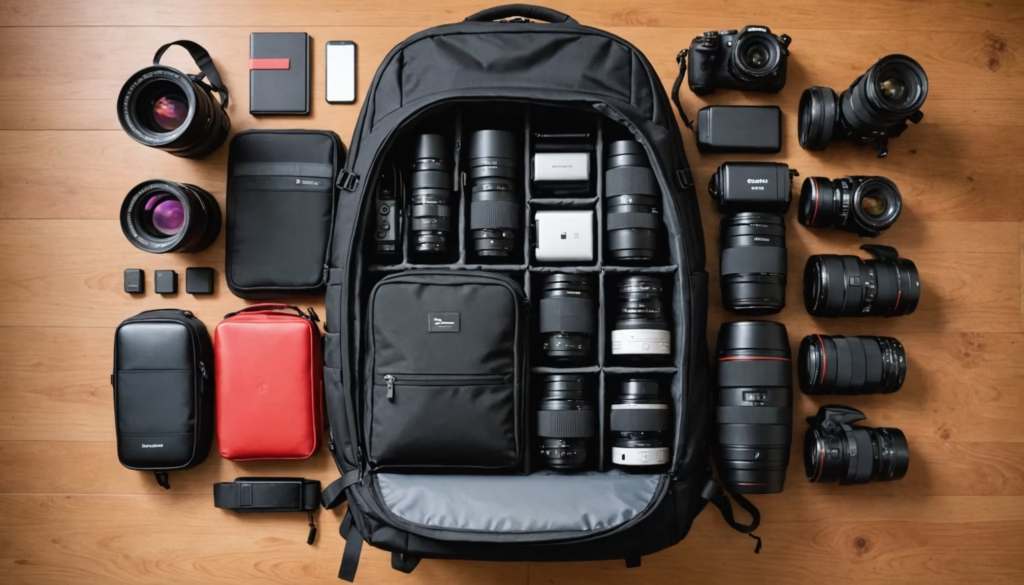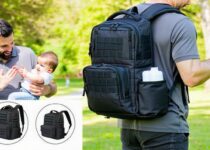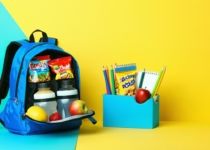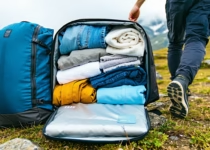Organizing Cables And Chargers In A Camera Backpack

When organizing cables and chargers in a camera backpack, you want to avoid that dreaded knot of wires when you’re racing to swap batteries or top off your drone controller. A tangled mess not only costs you time, it risks damaging delicate connectors and slowing down your shoot.
In this guide, you’ll find step-by-step tips for mapping out your gear, choosing the right organizers, and keeping every power brick, USB cord, and wall charger neat, protected, and within reach—no matter where your next adventure takes you.
Plan your cable layout
Before you stash a single cord, spend a few minutes planning where each cable and charger will live. Sketch a simple map of your backpack’s interior or lay it out on a table. That way you won’t have to reshuffle everything at the last minute.
- Identify your zones
Divide your pack into areas for power accessories, data cables, and multi-port hubs. For instance, use the front pocket for short USB cables and a side pocket for bulky wall chargers. - Assign based on frequency
Place the items you grab most—like your primary charger or USB-C cable—closest to the opening. Less-used extras can go deeper in the main compartment. - Note special requirements
If you carry a portable battery pack with specific ventilation needs, mark its spot to keep air flowing around it.
A clear layout cuts down on guesswork and prevents you from digging through every pocket just to find that little Lightning cable.
Group cables and chargers
Grouping like with like makes it easier to spot the cord you need. Do you have a USB-C cable for your gimbal and a mini-USB for your flash? Sort them into separate bundles before you pack.
Sort by device type
- Camera cables (USB, HDMI)
- Mobile power bank cords (USB-C, micro-USB)
- Charger bricks and wall adapters
- Specialty leads (GoPro, drone, LED lights)
Label each cable
Write on masking tape or use small colored tags to note what each cable does. For example:
- “Camera USB-C” on a blue tag
- “Flash mini-USB” on a red tag
- “Battery brick” on a yellow tag
This method pairs well with the strategies in the best packing order for cameras and accessories, so your charging gear follows the same logic as your lenses and bodies.
Choose organizer accessories
A few well-chosen pouches and straps can transform your pack from a tangle zone into a neatly arranged toolbox. Here’s a quick comparison of popular cable organizers:
| Accessory | Best for | Pros | Cons |
|---|---|---|---|
| Zip pouches | Bulk storage | Visible contents, budget-friendly | Adds extra weight |
| Cable wraps | Individual cords | Prevents knots, compact | Wrapping each takes time |
| Elastic straps | Quick loops | Reusable, adjustable | Limited capacity per strap |
Use zip pouches
A translucent pouch holds multiple cables and a charger brick in one spot. Pick pouches with reinforced seams to avoid accidental splits, and look for water-resistant material if you shoot in damp conditions.
Try cable wraps
Silicone or Velcro wraps keep each cord neatly coiled. Slip the wrap around the cable’s center, then fold the ends in. They’re perfect for USB and audio leads you use daily.
Employ elastic straps
Stash short cables around a pen-style elastic band or the built-in loops some backpacks include (see hidden features to look for in camera backpacks). Straps take seconds to secure and release, so you can grab what you need in a flash.
Maximize backpack pockets
Once you have your cables bundled and labeled, it’s time to make full use of every nook.
Use side compartments
Many camera packs feature slim side pockets that are ideal for flat charger bricks or a stack of cable pouches. Tuck adapters flat against the wall to keep the main compartment clear for your camera bodies.
Add mesh pockets
If your pack has internal mesh sleeves, slide in USB hubs or short cords so they stay visible. Mesh lets you glance at contents without digging—great when you’re on a tight schedule.
Layer with divider panels
Some backpacks include removable dividers. Create shallow trays by stacking thin dividers, then slot cables and chargers between them. This keeps each bundle in its own layer and prevents shifting on bumpy drives or hikes.
Protect fragile connectors
Connectors and plugs can bend or break if they collide with heavier gear. Here’s how to shield those delicate ends.
Use hard cases
Small clamshell cases designed for earbuds or SD cards work surprisingly well for cables. They snap shut to keep connectors from snagging on other items.
Add padding layers
Line a pouch with foam sheets or neoprene sleeves (you can cut up an old camera lens pouch). A cushioned buffer guards against impacts and keeps pins aligned.
Guard against moisture
If you often shoot in damp or humid spots, tuck a silica gel packet into your charger pouch. Moisture can corrode connectors—learn more about preventing it in how to keep moisture out of camera gear while traveling.
Maintain order on the go
Ever been in the field, battery dying, and no charger in sight? A little routine goes a long way to keep things tidy.
Quick access tips
- Designate a “hot pocket” for your current power cable and charger brick
- Swap spent cables for fresh spares before you close the pack
- Keep a small roll-up pouch near the top for last-minute additions
These practices pair nicely with advice on how to organize a camera backpack for fast access shooting, so you’re not opening every zipper when the moment counts.
Routine checks
Once a week, unpack your charging zone and give it a quick audit. Toss any broken wraps, reapply labels if they’ve faded, and ensure your grouping still matches your workflow.
Keep cables tangle free
Tangles slow you down. A few simple habits help you avoid knots altogether.
Use cable ties
Tie-and-release cable ties (not single-use zip ties) let you secure bundles tightly then loosen them with one hand. Thread the tie through your pack’s loops or D-rings for extra stability.
Employ splitter pouches
If you carry a multi-port USB hub, keep it in its own pouch with attached cables fanned out neatly. This prevents the hub from flopping around and tangling with other cords.
Frequently asked questions
How can I prevent cable damage in a backpack?
Store connectors in hard or semi-rigid cases, pad pouches with foam, and avoid placing heavy items on top of your cables. Regularly inspect cords for frays or bent pins.
What are the best labels for cables?
Use color-coded tags or write on small pieces of masking tape. Waterproof labels with fine-tip permanent markers also hold up well in varying temperatures.
How do I carry spare chargers without adding bulk?
Swap out bulky wall adapters for slim travel chargers when possible. Stash them in zip pouches against the pack’s back panel to distribute weight evenly.
Can I use Velcro straps instead of wraps?
Absolutely. Velcro straps offer quick release and adjustable tension. Just choose straps labeled “photography” or “electronics” to avoid adhesive marks on cables.
How often should I sort my cables?
Aim for a quick check each time you return from a shoot, plus a deeper audit every month. That routine keeps labels accurate and bundles up to date.
Where should I store multi-port USB hubs?
Keep the hub in a dedicated mesh pocket or small pouch with attached cables spread out. This stops the hub from rolling around and tangling with other gear.
Is it safe to store cables near camera batteries?
Yes, as long as both are padded and separated by a divider. Avoid direct contact to prevent scratches or pressure on battery terminals.
Final thoughts and next steps
Taming your cables and chargers turns your camera backpack into a streamlined workspace, so you can focus on the shot instead of fishing for power. Start with a clear layout, pick a handful of organizers that fit your style, and stick to simple routines. Try one tip today—like labeling every USB-C cord—and notice how much smoother your next shoot feels.
Got a favorite cable-management hack of your own? Share it below so everyone can keep their gear running smoothly. Happy shooting!


